
The FA provides a wide range of guidance for grassroots football in England, covering various aspects of the game. This ranges from the laws of the game in adult and youth football to a guide around disciplinary procedures and safeguarding.
In this guide, we examine the FA grassroots football rules that clubs, officials, managers, and staff must be aware of.
What are the different FA rules for grassroots football?
The FA Handbook is updated every season and covers all the rules and regulations for the season ahead. Below, we take you through some of the important rules that clubs, officials and managers should know.
Pitch sizes
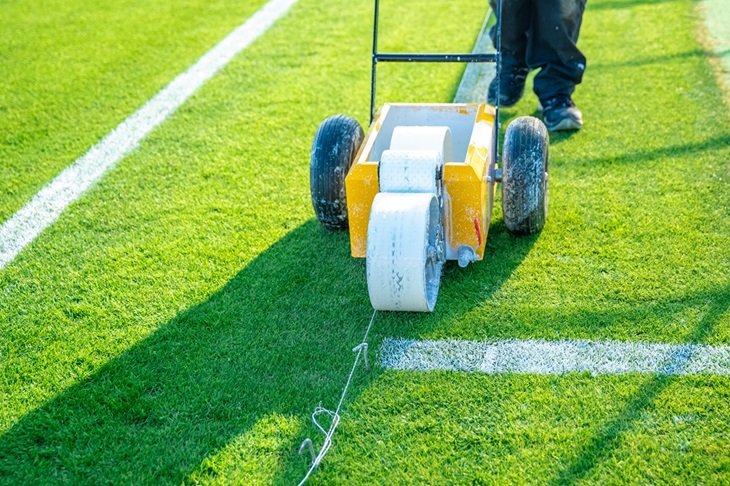
The FA grassroots football handbook specifies what size football pitches should be for different age groups at youth level and adult football:
- Under 7/8 year-olds (5v5)
- Pitch: 40 x 30 yds (46 x 36 yds with runff)
- Under 9/10 (7v7)
- Pitch: 60 x 40 yds (66 x 46 yds with runff)
- Under 11/12 (9v9)
- Pitch: 80 x 50 yds (86 x 56 yds with runff)
- Under 13/14 (11v11)
- Pitch: 90 x 55 yds (96 x 61 yds with runff)
- Under 15/16 (11v11):
- Pitch: 100 x 60 yds (106 x 66 yds with runff)
- Under 17/18 (11v11):
- Pitch: 110 x 70 yds (116 x 76 yds with runff)
- Senior football (11v11):
- Pitch: 110 x 70 yds (116 x 76 yds with runff)
ALSO READ: Who can play grassroots football?
Rules around the size of goals
The FA regulations state that the size of football goals varies for different age groups.
- Under 7/8 (5v5)
- Goalposts: 6 ft x 12 ft
- Under 9/10 (7v7)
- Goalposts: 6 ft x 12 ft
- Under 11/12 (9v9)
- Goalposts: 7 ft x 16 ft
- Under 13/14 (11v11)
- Goalposts: 7 ft x 21 ft (8 ft x 24 ft acceptable)
- Under 15/16 (11v11)
- Goalposts: 8 ft x 24 ft
- Under 17/18 (11v11)
- Goalposts: 8 ft x 24 ft
- Senior football (11v11)
- Goalposts: 8 ft x 24 ft
The FA rules also state that goalposts must be securely anchored to the ground or have a weighted back bar. Homemade or altered goalposts should not be used due to their safety risks.
Browse the Diamond Football range of football nets and goals to find the right size for your age group.
The pitch surface
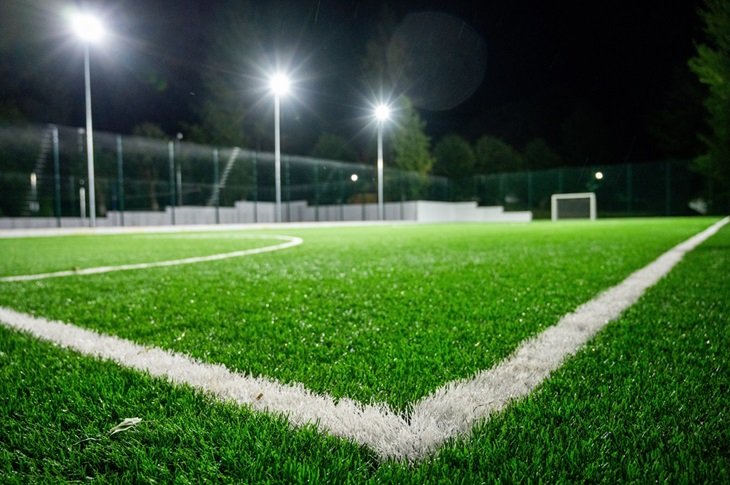
The playing surface must be a wholly natural pitch or, unless competition rules permit, a wholly artificial playing surface. Some competitions will allow pitches that have a hybrid system where there is a combination of artificial and natural materials. As clubs, you will need to check with your county FA and league.
ALSO READ: Football pitch preparation: How to get your football pitch match ready
The sizes of the goal, penalty and corner areas
Goal area
There are two lines which are drawn at right angles to the goal-line, 5.5m (6yds) from the inside of each goalpost. The rules state that these lines should extend into the field of play for 5.5m (6 yards) and are joined by a line drawn parallel with the goal line.
Penalty area
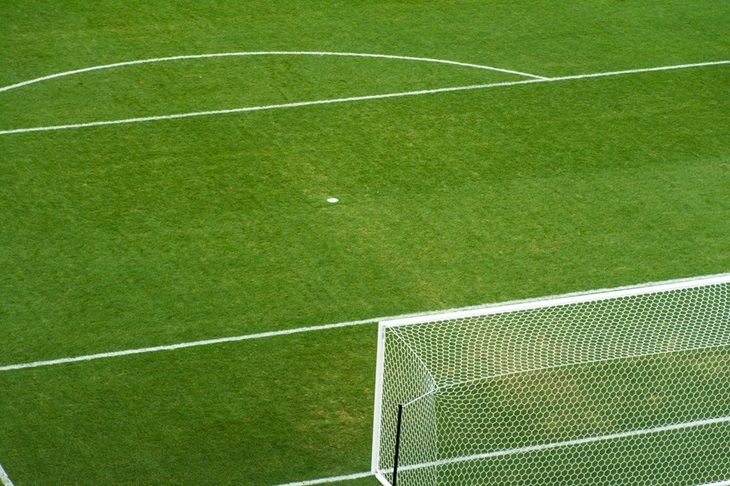
The penalty area must be 18 yards wide and long, and in each penalty area, the penalty spot must be 12 yards in the middle of the box and the midpoint between the goalposts.
An arc of a circle with a radius of 10 yards from the centre of each penalty mark is drawn outside the penalty area.
The corner area
The corner area is a quarter circle with a radius of one yard from each corner flag. It is drawn on the field of play and is the area where the ball must be placed when players are taking corners.
Footballs
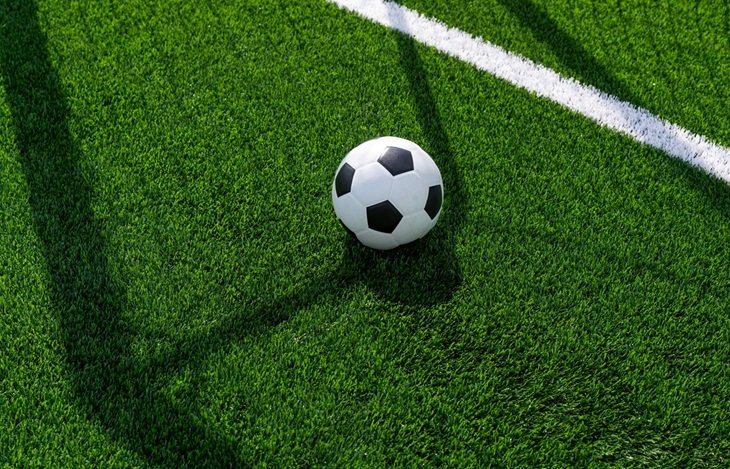
Every team needs plenty of football balls, but what are the rules around them?
All footballs must be:
- Spherical
- Made of suitable material
- Have a circumference of between 68 cm (27 ins) and 70 cm (28 ins)
- Weigh between 410 g (14 oz) and 450 g (16 oz)
- Have a pressure equal to 0.6 – 1.1 atmosphere (600 – 1,100g/cm2) at sea level (8.5 lbs/sq in – 15.6 lbs/sq in)
Rules for the players
Number of players
In adult football, a match is played by two teams of eleven players, one of which must be the goalkeeper. A match cannot start or continue if a team has fewer than seven players.
ALSO READ: How to keep fit in the football off-season
Substitutions
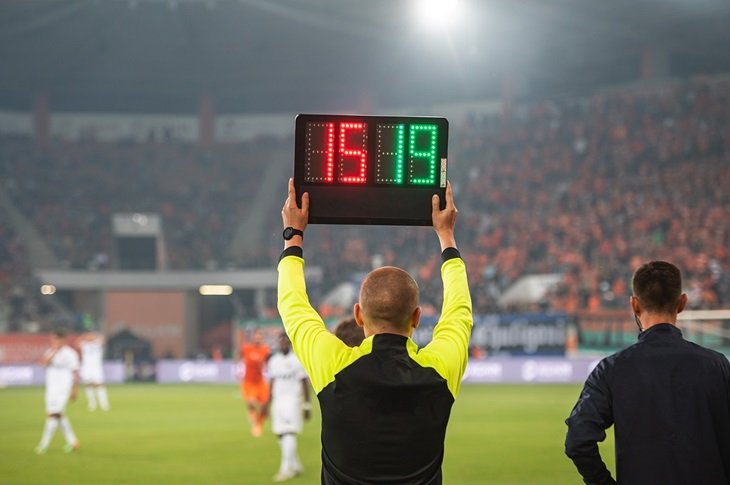
In regard to substitutions, for official competitions, up to a maximum of five can be used in an official competition. The use of return substitutions or rotation substitutions is only permitted in youth, veterans, disability and grassroots football, subject to the agreement of the FA.
The names of the substitutes must be given to the referee before the start of the match. Any substitute not named by this time may not take part in the match.
To make a substitution, the referee must be informed, and the player being substituted must be given permission by the referee to leave the field, unless they are already off the pitch, and they should leave by the nearest point of the pitch. The player must then go to the technical area or dressing room.
The player being substituted on must wait for their teammate to leave the field of play and wait for the referee to signal them on. A substitution can only be made whilst there is a stoppage in play.
Players who are sent off
If a player is sent off before a game, they cannot be named on the team sheet in any capacity. Any player starting or a substitute who is sent off once the game has kicked off cannot be replaced.
Team captains
Each team must have a captain on the pitch, and they must wear an armband. Whilst the team captain has no special status or privileges, they have a responsibility for the behaviour of the team.
The length of the game
In adult men's and women's football, a match lasts for 90 minutes or two equal halves of 45 minutes. It can be reduced if agreed between the referee and the two teams before the start of the match and is in accordance with competition rules.
The half-time interval must not exceed 15 minutes. In extra time, the half time interval should only include a short drinks break and should not exceed one minute.
Additional time, or injury time, as it is also known, can be played at the end of each half and in extra time. This is to cover any playing time that has been lost through substitutions, injuries to players, time-wasting, disciplinary sanctions, medical stoppages such as drink breaks, and other examples where time has been wasted, such as a goal celebration.
If a match is abandoned partway through, it will need to be replayed unless the competition rules or organisers decide otherwise.
Fouls and misconduct
Direct free kick
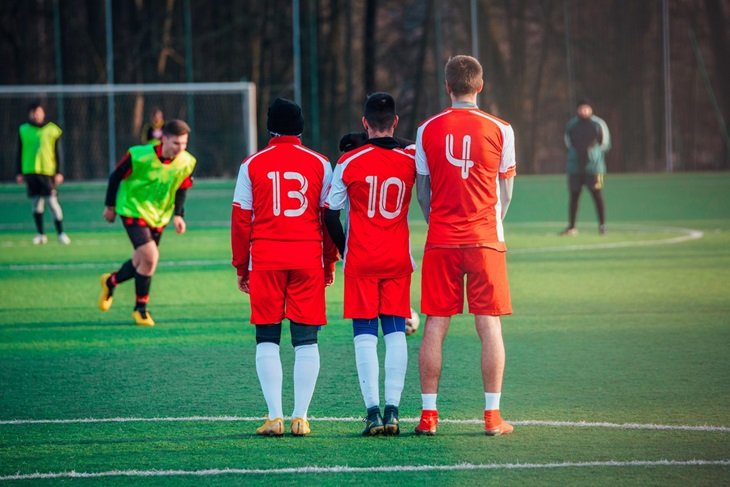
A direct free kick is given if a player commits one of the following offences on an opponent which is deemed as careless, reckless or using excessive force by the referee:
- Kicks or attempts to kick
- Charges
- Jumps at
- Pushes
- Strikes or attempts to strike (including a head-butt)
- Tackles or challenges
- Trips or attempts to trip
- A handball offence (except for the goalkeeper within their penalty area)
- Holds an opponent
- Impedes an opponent with contact
- Bites or spits at someone on the team lists or a match official
- Throws an object at the ball, opponent, or match official or makes contact with the ball with a held object
The handball rule
Firstly, not every touch of a player’s hand/arm with the ball is an offence, but the following are offences if a player:
- Touches the ball deliberately
- Touches the ball with their hand/arm when it has made their body unnaturally bigger.
- Scores in the opponent's goal directly from their hand or arm, even if accidental or immediately after the ball has touched their hand or arm.
A goalkeeper cannot handle the ball outside the penalty area, and if they handle the ball inside their penalty area when not permitted to do so, an indirect free kick is awarded.
ALSO READ: What are the best goalkeeper training drills?
Indirect Free kick
Indirect free kicks are awarded if a player:
- Plays in a dangerous manner.
- Impedes the progress of an opponent without any contact being made.
- Commits dissent, uses offensive, insulting or abusive language and action(s) or other verbal offences.
- Prevents the goalkeeper from releasing the ball from their hands or whilst they attempt to kick the ball.
- Deliberately kicks the ball back to the goalkeeper, who then uses their hands or picks it up.
Sending off offences
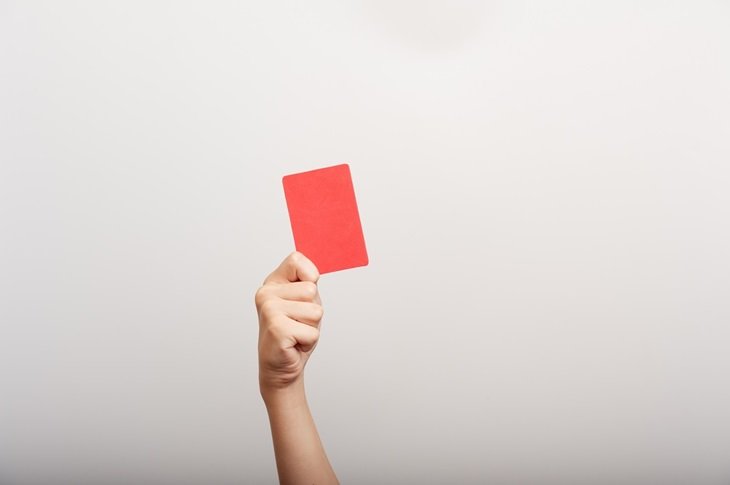
A player, substitute or substituted player can be sent off for one of the following offences:
- Denying the opposing team a goal or an obvious goal-scoring opportunity by committing a deliberate or non-deliberate handball offence outside their own penalty area.
- Denying a goal or obvious goal-scoring chance from foul play. This can include being the last defender and pulling back an attacker who is through on goal or tripping them.
- Serious foul play.
- Biting or spitting at someone.
- Violent conduct.
- Using offensive, insulting or abusive language and/or action(s).
- Receiving a second caution in the same match.
Managers and coaches can also receive red cards for a variety of offences, such as:
- Entering the field of play to confront a match official (including at half-time and full-time) or interfere with the play or an opposing player.
- Delaying the restart of play by the opposing team.
- Leaving the technical area to act in a provocative or inflammatory manner or remonstrate with a match official.
- Physical or aggressive behaviour (including spitting or biting) towards an opposing player, substitute, team official, match official, spectator or any other person.
- Receiving two yellow cards in one match.
- Violent conduct.
- Using offensive, insulting or abusive language and/or action(s).
ALSO READ: Thank you gifts for football coaches
Equipment rules and regulations
Compulsory football equipment

The FA grassroots football rules state that the basic compulsory equipment of a football player compromises a jersey or shirt with sleeves, shorts, socks, shin pads and appropriate footwear as determined by the referee and venue.
Equipment that is banned
The FA grassroots rules state that a player must not use equipment or wear anything that is dangerous.
Non-dangerous equipment that is allowed
Non-dangerous protective equipment, such as headgear, facemasks, and knee and arm protectors made of soft, lightweight padded material, is permitted, as are sports spectacles.
Mouthguards can also be worn during football and a position statement covering their use has been written by the Faculty of Sport and Exercise Medicine in conjunction with the Faculty of Dental Surgery and the Royal College of Surgeons of England.
Additional medical equipment
There are instances where players, officials, or other support staff need to wear certain equipment for their health due to a diagnosed medical condition. This includes wearable medical devices. In these circumstances, the individual will need to get a ‘doctor's letter’ from their own GP stating that the equipment in question cannot be removed for sport. The letter should be stored by the appropriate club and shown to the referee before any game.
Medical devices that are worn by players will need to be covered to keep them and other players safe from harm.
Medical

The medical regulations set out by the FA are binding on all clubs participating in the Premier League, EFL, and leagues at Steps 1-6 of the National League System, The FA Women’s Super League, The FA Women’s Championship, and The FA Women’s National League.
When participating in matches in an FA Competition, clubs must comply with the minimum medical standards that apply to their league matches, with necessary allowances made to reflect the different context. You must work with your league or local County FA for the medical requirements that relate to your level of participation.
Whatever the level of facilities and resources, taking steps to ensure the safety of people playing, supporting, officiating and watching sports is fundamental. This responsibility is not just for a club or organisers; individuals also have a responsibility to look after themselves and others, be aware of risks, and limit the potential for accidents, injury, and long-term damage.
Below are some of the FA's medical regulations:
- Head injuries: All clubs must ensure that any player in a league match having left the field with a head injury shall not be allowed to resume playing or training without the clearance of a qualified medical practitioner.
- Primary training for medical staff: All pitchside medical staff need evidence that they have completed an approved training course and subsequent re-validation where appropriate. At all times during play, there must be such a person at pitchside.
- A club or football programme may also have a duty of care to put in place adequate Medical Emergency Action Plans and safety processes to safeguard an individual's health and welfare.
- The FA regulations state it is mandatory that all facilities in Steps 1-6 of the game have access to the provision of an Automated External Defibrillator (AED) on-site.
You can find out more information about the different medical regulations in the FA Handbook.
ALSO READ: What should be in a football first aid kit?
Safeguarding
The FA has comprehensive policies for safeguarding children and adults at risk, emphasising the importance of a safe environment in football. These policies include stringent measures and guidelines to protect vulnerable individuals within the sport.
The FA says they have a three-part strategy to safeguard the game:
- Implementing preventative safeguarding measures (such as safer recruitment) to create fun, safe football environments.
- Making the reporting of concerns as easy as possible.
- Ensuring safeguarding, child protection, and concerns of adults at risk are investigated swiftly and thoroughly in conjunction with statutory agencies – and with demonstrable outcomes.
FA guidance and rules for grassroots football
This article has taken a look at some of the guidance and rules the FA has for grassroots football, but for the full details, you should refer to the FA’s Handbook.
Here at Diamond, we offer a wide range of products and football training equipment. You can browse our range for whatever you need.
For more tips, guides, and advice, visit our news page.





